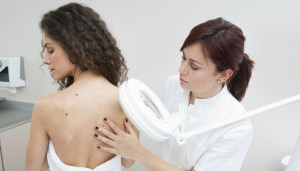 Allergy testing is the most effective way to find out what allergens are causing allergic reactions. There are several different types of allergy testing: skin, blood, food and asthma.
Allergy testing is the most effective way to find out what allergens are causing allergic reactions. There are several different types of allergy testing: skin, blood, food and asthma.
Skin reaction tests involve pricking the skin with droplets of the allergen. If there is a reaction to the drop, the skin will swell and cause a wheal (an enlarged area). A positive reaction is noted if the wheal is larger than the accepted 3 mm criteria. This test is not considered to be an accurate test for food allergies. If the prick test does not show any reactions, medical professionals may perform a intradermal test. Again, this is not another accurate test used for food allergies.
The RAST (radioallergosorbent test) is a blood test to determine the level of the IgE antibody in the system. A newer blood test, the ImmunoCap has been used to detect IgE but some medical personnel chose not to use it because it is unreliable for skin testing.
Food elimination diet is used to determine if an eliminated food causes an allergic reaction. Patients stop eating a food(egg, peanut, milk, shellfish, wheat, soy and tree nuts) for up to two weeks. After 2 weeks, the food is reintroduced. if there are allergic symptoms, then this food is considered to be an allergen.
 For allergic asthma, a chest x-ray and pulmonary function tests are conducted to determine how allergies are affecting the functioning the airway. Pulmonary function testing measures the level of pressure in the lungs. Patients are given a broncho-constricting medication. If the patient is having difficulty breathing out (on expiration), asthma is suspected.
For allergic asthma, a chest x-ray and pulmonary function tests are conducted to determine how allergies are affecting the functioning the airway. Pulmonary function testing measures the level of pressure in the lungs. Patients are given a broncho-constricting medication. If the patient is having difficulty breathing out (on expiration), asthma is suspected.
For drug allergies (especially penicillin), there is a skin test available. The allergist will perform a skin reaction test with a droplet of penicillin. A positive test indicates the presence of a penicillin allergy. If the test is negative, an oral challenge test is ordered. A dose of penicillin can produce an allergic reaction. If an individual has a penicillin allergy, penicillin and other compounds of penicillin (amoxicillin, ampicillin, cloxacillin) are to be avoided.
An allergy to cephalosporin antibiotic can not be tested effectively unless by provocative testing. This testing involves administering the antibiotic under closed supervision. If the test is positive, cephalosporin and other compounds of cephalosporin (Cefzil, Ceftin, Ceclor, and Keflex) are to be avoided.
 For latex allergies, skin and blood tests are performed. Using a skin reaction test, the allergist uses droplets of extracts. If the extracts cause skin irritation, then there is a positive test for latex. There is latex RAST to detect a latex allergy in the blood stream. Allergists recommend wearing a medical identification badge for latex allergy because latex is used everywhere including hospital and medical office settings.
For latex allergies, skin and blood tests are performed. Using a skin reaction test, the allergist uses droplets of extracts. If the extracts cause skin irritation, then there is a positive test for latex. There is latex RAST to detect a latex allergy in the blood stream. Allergists recommend wearing a medical identification badge for latex allergy because latex is used everywhere including hospital and medical office settings.
For insect allergies, skin and blood tests are performed. Insect allergies are caused by: aphids, yellow jackets, the yellow and white-faced hornet, wasps and fire ants. The tests are very useful after an individual has been stung or bitten by an insect. The skin prick test may determine what type of insect was involved and if there are any other insects carrying the same allergy. If there is a negative skin test, the allergist may perform the RAST. If someone was stung the first time and had a severe reaction, the chances of another severe reaction after being stung jumps up to more than 70%.
Related Articles
